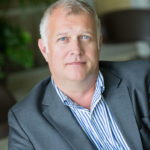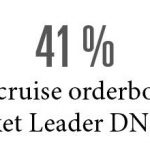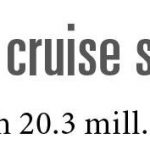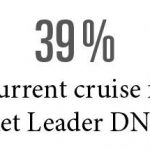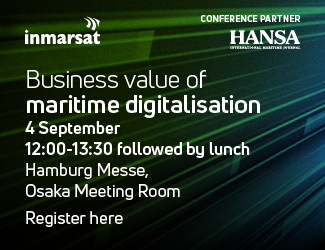HANSA talked to Helge Hermundsgård, DNV GL’s expert for the cruise market,
about newbuilding bubbles, new shipbuilding players and new technologies
You are known as someone who does not share the opinion that there is a newbuilding bubble in the[ds_preview] cruise industry…
Helge Hermundsgård: There is a lot of pessimism that the next downturn is to be expected. But it is about as accurate as saying the world is flat. Hotels for leisure purposes have a capacity of around 35 mill. beds. If you then compare with the size of the cruise industry, which is less than 600.000 beds, the cruise industry is a midget. If cruise is able to attract more people from the total leisure market, they can even grow at a higher pace than they do today. Today the limitation is yard capacity. If you went to Carnival, NCL or MSC and offer a newbuild to be delivered in 2018, they would sign.
Will it take another five to ten years until the Asians are capable of building cruise vessels like the Europeans do?
Hermundsgård: The Asians will come, no doubt about it. When do they represent a key contribution to the growth? That is probably more in the 10 to 15 years range.
Do you think we will see any consolidation in Europe’s cruise shipyards market?
Hermundsgård: The big ones like Meyer, Fincantieri, STX will stay there. Then you have smaller yards popping up like Brodosplit, the Vard Group, Kleven who secured expedition ships, Ulstein is working on more, Damen secured expedition ships lately. There is another yard, which I cannot disclose yet, which is very close to securing an order for a very interesting ship…
Is it a Norwegian shipyard?
Hermundsgård: No, there is something going on in Norway as well, but that is not the one I was thinking of. What you see now is that for smaller ships in niches you will have new players entering the market, which will see business growth in the next years. They will develop capacity and capabilities and we will see a few new contracts that will surprise here in Europe the next year. It is not »might«. It will be.
Do you think that we will see more projects like MV Werften, where a cruise company buys its »own« shipyard?
Hermundsgård: It will be very interesting to see where they will be in three years. Most of the big companies have secured their newbuilding slots and have very long-term relations with yards. Their priorities with Meyer, STX, Fincantieri are extremely high. Star and Genting were not that big in newbuilding and this was their opportunity to get tonnage. For them it was good, but I don’t think that it is necessarily good for others.
Is there any »border« for vessel sizes?
Hermundsgård: There probably is. Have we reached it? I don’t think so. The contribution of economies of scale is significant. What we see is a larger variety of ships.
More variety in terms of designs for specific regions?
Hermundsgård: Yes. A very, very interesting change is a complete revamp of the expedition market. There are more than ten newbuilding orders today. It will be a completely new offering for expeditions and I think that this will be very attractive because people are searching for unique experiences.
We have the Arctic. What else?
Hermundsgård: You have Galapagos, the Amazon, the Northwest Passage, Greenland. There are people out there with money to pay for these voyages. And you will have other segments that will be innovated in the years to come.
What could these segments be?
Hermundsgård: Small but ultra-luxury.
You once said that LNG is »the next fuel of cruise ships, but not necessarily the fuel of the future«. What is the argument?
Hermundsgård: LNG is a non-renewable carbon. There is no question: LNG offers a significant improvement for the environment. But it is still a fossil fuel. People are exploring fuel cells, but currently we are in the very early days of that. A carbon-free emission from a cruise ship should be the ultimate goal. That is not tomorrow and not next year, but for sure that will be a development that we see before we enter the coffin.
Is there any new or innovative technology in the industry besides LNG or fuel cells?
Hermundsgård: There is the interesting development of hybrid systems using batteries. There is innovation on how to treat waste and heat on board as a source of energy. Some owners reached a 25% increase in efficiency. Not because they have introduced LNG, but because they have a very high dedication to check all elements producing and consuming energy. I won’t be surprised if we see further two-digit improvements on sister vessels. Besides, I think we will see other means which improve efficiency.
What could that be?
Hermundsgård: For example, there is a lot of focus on hydrogen. This is interesting, although it takes a lot of space.
Bill Gates said it very cleverly: We usually overestimate the amounts of changes in the next two years, however we underestimate the amounts of change in the next ten years. What is happening in the development of alternative fuels in the next ten years might change the game.
Interview: Michael Meyer





